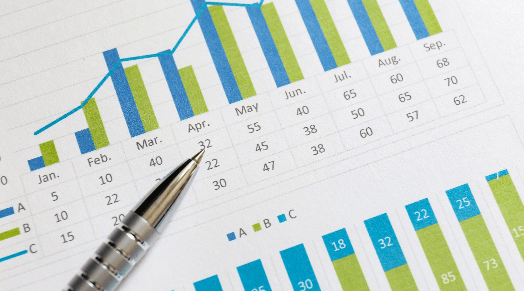By 2022, 90% of corporate strategies will explicitly mention information as a critical enterprise asset and analytics as an essential competency
– Gartner, 100 Data and Analytics Predictions Through 2023
In today’s digital era, data & analytics projects play a critical role in the digital transformation journey for any organization. However, many still struggle to understand, communicate, and measure the business value of D&A projects. Understanding and show showing the ROI of any project is essential to foster transparency with stakeholders and build a strong foundation that D&A projects contribute value.
What is business value?
Business value, by definition, is a tangible or intangible benefit that can be realized by the stakeholder of a project. Tangible business value focuses on how the project affects the income statement, through reducing costs or increasing revenue. Equally important, intangible value covers productivity enhancements, key differentiators, and customer satisfaction, like improving hiring efficiency of an organization. You need to measure ROI on your data and analytics strategy, but do you actually do it?
It starts by making a paradigm shift in first identifying the business goal and then regularly linking your initiative back to your business strategy and outcomes. Many project teams are solely focused on operational efficiency and therefore they do not any value achieved throughout the project. Through a well-defined framework, you can begin to understand the value created, how it adds to the business, and how it aligns with business strategies.
3 Steps to Show Business Value
1. Understanding and identifying the business vision
The first step is to understand what problem the business needs to solve and what the business wants to achieve. We used an interview method to identify who will use the data, when the information is needed, and how they will engage with the insights. We then understood that the commercial sales department started a commission campaign for a new wireless product, and the stakeholders wanted to encourage the sales team to make more sales of this new product to capture the market.
Through this exercise, we identified the tangible and intangible values of the project—the strategic value was to improve productivity, and the economic impact was to improve the sales figure and footprint of the new product.
2. Gather necessary data and develop insights
Once the business objective was clear, next categorize business value buckets, such as revenue gains, cost savings, and customer satisfaction, and identify which data points would affect these buckets. For example, if you claim to be adding incremental revenue, then track the amount on a daily, weekly, or monthly basis. We captured data on how much manual effort was required to calculate the commission, and how many additional product sales occurred.
3. Articulate business value for stakeholders
The last step is presenting the business value. A key aspect in articulating business value is understanding what is valuable for the business stakeholders. In banking, it’s about delivery services, so the value is productivity improvement by saving hours of manual effort. Whereas in retail, it’s about sales, so the value is the improvement in revenue or gross sales (in % or $ terms). Articulating the value that a data & analytics project will deliver reminds the stakeholders of the value delivered.
We used a simple comparative method to articulate the three business benefits our solution provided. We validated it with the business sponsors before showcasing the stakeholders.

Use Case: Finding Value in Intelligent Automation
Our customer is a world leader in light controls and lighting control systems for both residential and commercial applications. They are the leading manufacturer of more than 17,000 energy-saving light, shade, and temperature controls for new and existing homes and offices.
At Infocepts, we built an automated performance tracking system to determine commissions for their sales team based on multiple criteria and needed to provide insights to the Product Manager for effective decision making. Prior to the tracking system, they were manually capturing monthly data and performing calculations, which were time-consuming and prone to data inaccuracy.
Though it may seem like the tracking system was a standard process automation project, the business intent for the commission program was different. By using a well-defined framework, we were able to determine the business value by connecting the project to the business goal.
Revisit Your Business Strategy
There is no one-size-fits-all formula for measuring business value. But following the easy 3-steps of understanding the business vision, gathering necessary data and developing insights, and articulating business value for stakeholders will guide you through the process. Next time you undertake a data & analytics project, take the time to connect the effort to the intended results. Communicate the value of your project within your organization, it will show what data & analytics can accomplish.
Questions about where to start? Get started with Infocepts, and one of our analytics experts will consult with your company about your goals your upcoming project.
Recent Blogs

Bots to Brains: How Agentic AI is Changing the Game
July 8, 2025

The Future of Supply Chains Is AI-Driven—Is Your Business Ready to Embrace the Change?
July 2, 2025

What Retail Media Can Learn from Instacart’s AI Strategy
June 24, 2025

Beyond Chatbots: How Agentic AI Is Automating High-Stakes Business Decisions
June 11, 2025


